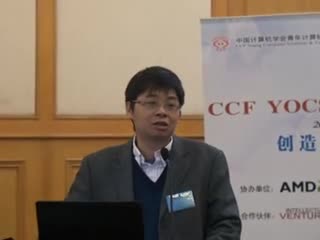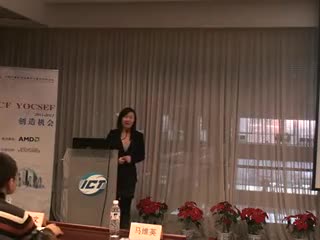中国计算机学会青年计算机科技论坛
CCF Young Computer Scientists & Engineers Forum
CCF YOCSEF
于2015年7月11日(星期六)14:30-16:30
在南开大学伯苓楼306会议室
报告会主题
文本大数据的挖掘与语义理解
程 序
14:00 签到
14:30 报告会开始
特邀讲者:徐 君 博士,中国科学院计算技术研究所 网络数据科学与技术重点实验室研究员、博士生导师
报告题目:多样化排序学习算法
特邀讲者:韦福如 博士,微软亚洲研究院 自然语言计算组 主管研究员
报告题目:Sentiment Embedding and Composition
执行主席:刘 杰 博士,南开大学 副教授,CCF YOCSEF天津AC委员
执行主席:张 鹏 博士,天津大学,CCF YOCSEF天津委员
如参会,请于7月5日前邮件回复,以便提供会务。
联系方式:刘杰,jliu@nankai.edu.cn
特邀讲者:徐君

徐君研究员分别于2001年和2006年获得南开大学信息技术科学学院学士学位和博士学位。博士毕业后,徐君先后就职于微软亚洲研究院和华为公司诺亚方舟实验室,任副研究员、研究员和高级研究员,于2014年加入中国科学院计算技术研究所网络数据科学与技术重点实验室,任研究员、博士生导师。徐君的研究兴趣集中于互联网搜索、机器学习和网络大数据分析,在包括SIGIR、WWW、CIKM、ACL、AAAI等国际学术会议和JMLR、TOIS等国际期刊发表了二十几篇论文,出版英文专著1本,获得授权美国专利8项。担任SIGIR 2014国际研讨会Semantic Matching in Information Retrieval (SMIR '14)共同主席,担任亚洲机器学习会议ACML 2014和ACML 2015高级程序委员会委员(Senior PC),多次担任SIGIR、WWW、NIPS、WSDM等国际学术会议的程序委员会委员。个人主页: http://www.bigdatalab.ac.cn/~junxu
报告提要:用户的多样化信息需求要求信息检索系统在对结果进行排序时,在结果列表中尽可能提供满足用户不同需求的文档。在理想情况下,多样化排序模型需要既能通过最大化边缘相关度(maximal marginal relevance, MMR)准则选取与已有结果差异最大的文档,又能够通过最大化评价准则实现相关性和多样化的平衡。现有模型很难同时满足以上两个要求。本报告的研究将排序学习的思想引入多样化排序,设计出符合MMR准则的排序打分函数,并通过直接优化排序评价准则学习模型参数,从而得到理想的多样化排序学习算法。基于多个TREC公共数据集上的实验结果表明,与已有的模型相比,本研究所提出的方法能够显著的提升多样化排序的效果,并且能够根据用户的意愿选定需要优化的评价准则。
特邀讲者:韦福如

Dr. Furu Wei is a lead researcher in Natural Language Computing group at Microsoft Research Asia, Beijing, China. Before joining MSRA-NLC in Nov. 2010, he has been a staff researcher at IBM Research - China (IBM CRL) since Jul. 2009. Furu received his Ph.D in Jun. 2009 from Department of Computer Science of Wuhan University. Before that, he received a B.Sc degree from the same department in 2004. Furu's research interests include natural language processing, information retrieval and machine learning. Furu has published more than 60 papers in top journals/conferences in related areas, including Computational Linguistics, ACL, SIGIR, AAAI and IJCAI.
报告提要:Sentiment analysis refers to the application of natural language processing, computational linguistic, and text analytics to identify and extract subjective information in source materials. One major task is to determine the attitude of a speaker or a writer with respect to some topic or the overall contextual polarity of a document (or phrase, sentence, etc.). In this lecture, I will talk about deep learning based techniques for sentiment classification. Especially, I will introduce our recent work on algorithms and methods for learning sentiment specific word embeddings (i.e. sentiment embedding) and sentiment specific semantic compositions (i.e. sentiment composition).

































